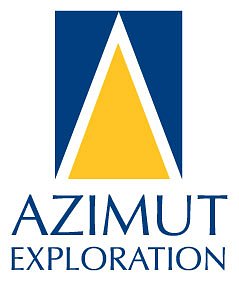
Azimut’s Quebec Gold Discovery Signals Potential for New Mining Hub
Drilling at Azimut Exploration’s Wabamisk property reveals visible gold across a 700-meter trend, bolstering Quebec’s James Bay region as a key exploration hotspot for critical minerals.
Azimut’s Quebec Gold Discovery Signals Potential for New Mining Hub
MONTREAL, QC – November 18, 2025 – Azimut Exploration Inc. has announced promising initial results from its maiden drilling program at the Rosa Zone on its 100% owned Wabamisk property in Quebec, sparking renewed interest in the region’s potential for significant gold deposits. The discovery, characterized by visible gold in over 40% of drilled holes, comes amidst a surge in mineral exploration activity in the James Bay region, positioning Quebec as a critical hub for critical mineral supply chains.
A Golden Trend Emerges in James Bay
The results from the Rosa Zone show visible gold identified in 11 of 26 drill holes over a 700-meter east-west trend. This initial success is prompting analysts to reassess the property’s potential and the broader geological context of the region. “The consistent presence of visible gold is a strong indicator of a robust mineralizing system,” said one mining analyst. “While early stage, these results significantly de-risk the project and warrant further investigation.”
Azimut’s exploration strategy focuses on identifying prospective areas through advanced data analytics – a methodology the company refers to as AZtechMine™. This approach, coupled with the favorable geological setting within the Archean Superior Province, has proven effective in pinpointing high-potential targets. The company holds the largest multi-commodity exploration portfolio in Quebec, indicating a systematic and long-term approach to mineral exploration.
However, the success isn’t solely attributable to technology. The James Bay region boasts a wealth of natural advantages, including a well-established infrastructure network developed during previous hydroelectric projects. This infrastructure significantly reduces logistical challenges and lowers the cost of exploration and potential future development.
Beyond Gold: A Multifaceted Mineral Landscape
While gold is currently grabbing headlines, the Wabamisk property showcases a more diversified mineral potential. Beyond the Rosa Zone’s gold discovery, Azimut has outlined an extensive antimony-bearing system in the Fortin Zone, highlighting the property’s potential for multiple critical minerals.
Notably, Azimut’s adjacent Wabamisk East property has revealed a high-grade lithium surface discovery, prompting a strategic option agreement with Rio Tinto. This demonstrates the increasing demand for lithium – a crucial component in electric vehicle batteries – and the region’s growing importance in the clean energy transition.
“The James Bay region isn’t just about gold anymore,” explained a geologist familiar with the area. “It’s becoming a diversified mineral district, with significant potential for lithium, copper, and other critical minerals. The combination of geological favorability, established infrastructure, and proactive exploration is attracting significant investment.”
Balancing Exploration with Environmental Responsibility
As exploration activity intensifies, concerns regarding environmental impact and responsible development are also growing. The James Bay region is a sensitive ecosystem, home to diverse flora and fauna. Ensuring sustainable exploration practices and meaningful engagement with local communities are paramount.
Azimut emphasizes its commitment to responsible exploration. The company is working closely with local First Nations communities to understand their concerns and incorporate traditional knowledge into its exploration plans. “Open communication and collaborative partnerships are essential for ensuring that exploration benefits both the economy and the environment,” explained a representative from a local community organization. “We are optimistic that Azimut will prioritize responsible development and work with us to protect our lands and resources.”
Furthermore, Azimut is implementing advanced environmental monitoring technologies to minimize its footprint and mitigate potential impacts. This includes detailed baseline studies, water quality monitoring, and reclamation planning. While these efforts are commendable, ongoing scrutiny and transparent reporting will be crucial to ensuring long-term sustainability.
Looking Ahead: Regional Growth and Investment
The positive results from Azimut’s Wabamisk property, coupled with ongoing exploration activity from other companies in the James Bay region, are signaling a potential resurgence in mining investment and economic growth. The region is attracting significant capital from both domestic and international investors, fueling a new wave of exploration and development projects.
However, challenges remain. The remote location, harsh climate, and limited access to skilled labor pose logistical hurdles. Addressing these challenges will require collaboration between governments, industry, and local communities. “Investing in infrastructure, training programs, and sustainable development initiatives is crucial for unlocking the full potential of the James Bay region,” said an economic development specialist. “A long-term vision and a commitment to responsible development are essential for ensuring that the benefits of mining are shared by all stakeholders.”
The future of mining in the James Bay region hinges on a delicate balance between economic growth, environmental sustainability, and social responsibility. With proactive planning, transparent communication, and a commitment to innovation, the region has the potential to become a world-class mining hub and a driving force in the clean energy transition.
📝 This article is still being updated
Are you a relevant expert who could contribute your opinion or insights to this article? We'd love to hear from you. We will give you full credit for your contribution.
Contribute Your Expertise →